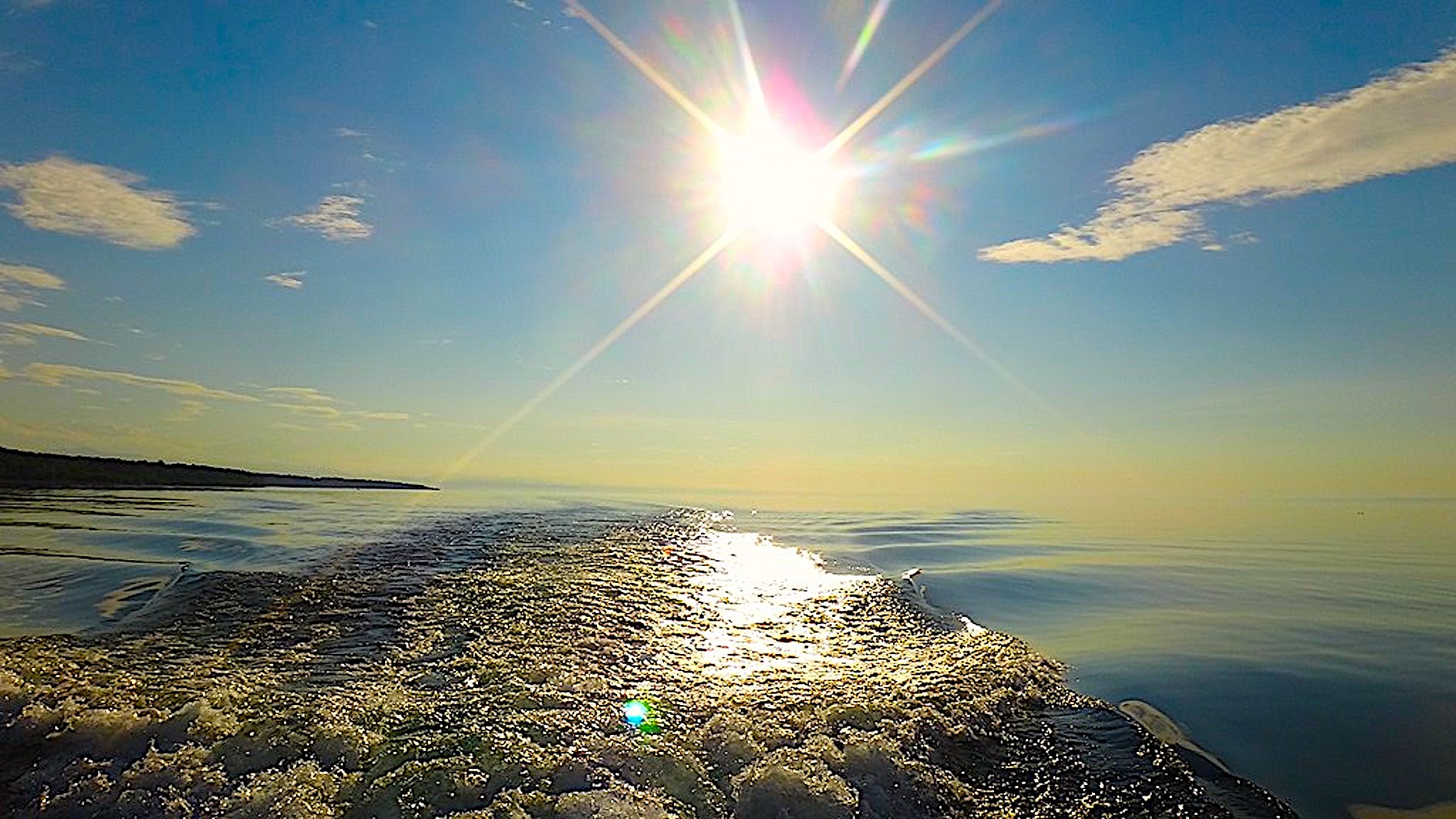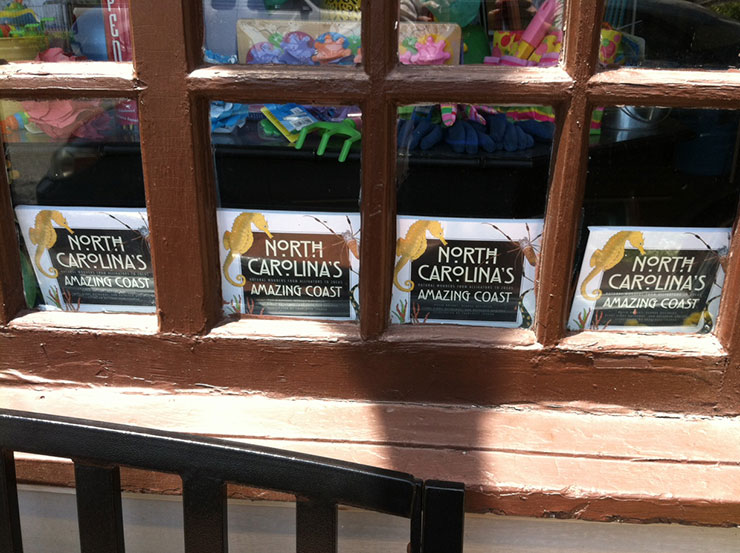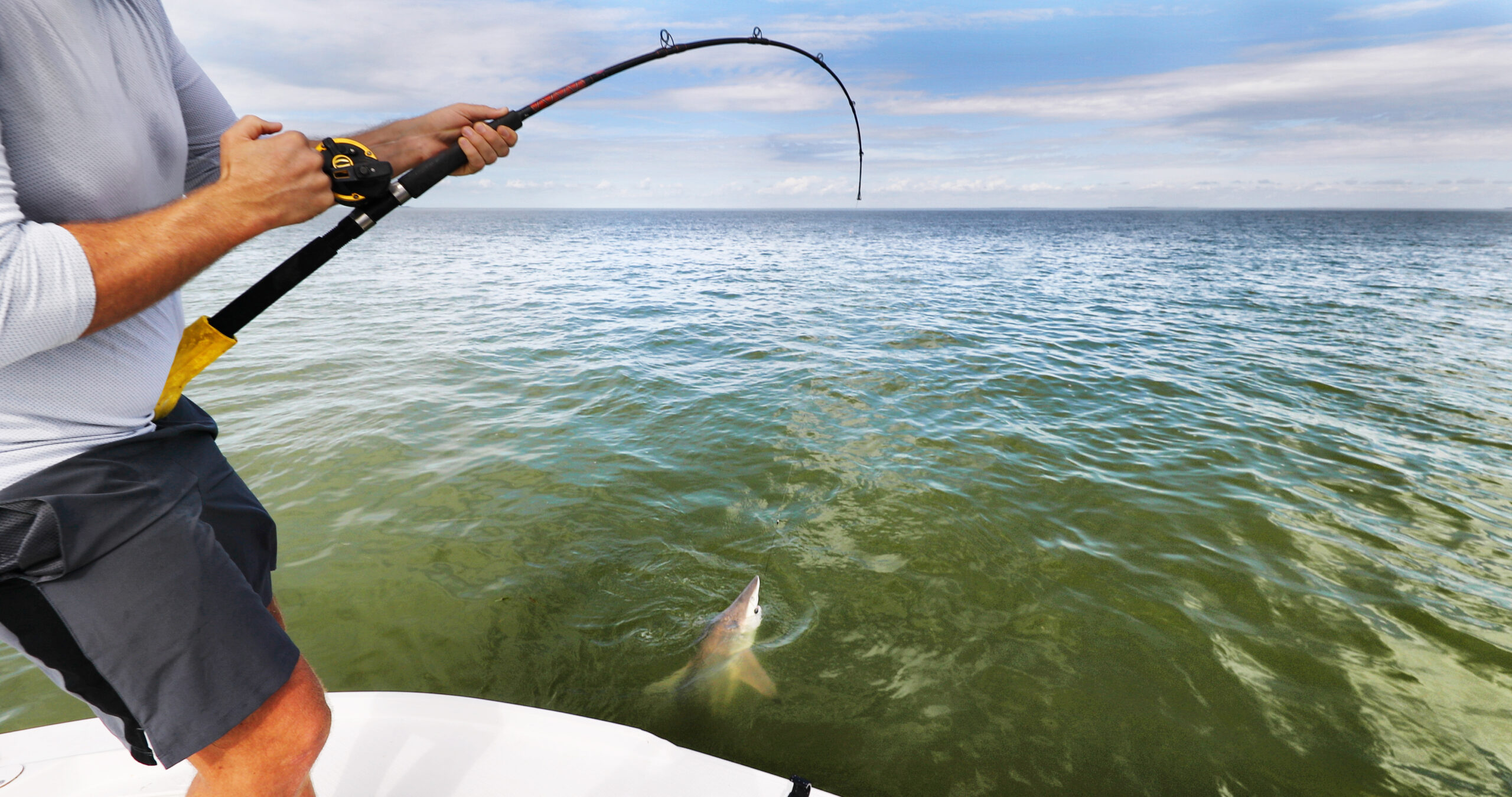more boating, fishing, and other fun
Here are some simple calculations to help boaters plan for efficient gas usage.
The most common vessels used by commercial and recreational boaters in North Carolina have planing hulls and are powered by two- or four-stroke gasoline engines. At full throttle and averaged across makes and models, those engines burn about one gallon of fuel per hour for every 10 horsepower (hp). Generally, it takes about 2.5 hp to plane 100 pounds for a near flat-bottomed boat. Other shapes, such as deep-v hulls, require more power. Further, if the boat drops off plane, the amount of horsepower required to get the boat back on plane will increase dramatically.
Also, trolling can increase fuel consumption. Carbureted two-stroke engines perform significantly worse than four-stroke and direct-injection two-stroke motors at the same speed, and can use about twice as much fuel per horsepower.

Many boaters know that throttling back can save fuel. Below are numbers to show the savings possible through careful handling.
To determine an average fuel usage at gallons per hour (gph), divide horsepower by 10. Therefore, a boater with a four-stroke, 250-hp marine outboard engine running at full throttle, or about 6,100 rpm, is using 25 gph.
But, an engine is most efficient at 75 to 80 percent of rated output rather than at full throttle. The same boater reports that throttling back to 77.5 percent of rated output, or 4,728 rpm, consumes only 12.5 gph, for a 50 percent fuel savings. Dropping back on the throttle a small fraction can yield large savings. But this comes at a cost. It would take longer to get to the destination.
Other ways to maintain fuel efficiency include adjusting vessel trim and traveling in favorable conditions.
Vessel trim controls the amount of drag on the boat. A boat trimmed at too much bow up is dragging too hard at the stern, while a bowdown boat is plowing and difficult to steer. Use the engine’s power trim and trim tabs, if fitted, to achieve correct trim, which is typically two to five degrees bow up.
Sea conditions will affect the fuel efficiency of a planing-hull boat. Rough conditions — leading to pounding or plunging, or forcing the vessel to slow and come off plane — can rapidly decrease fuel efficiency.
Planning your trip to take advantage of tides, currents and predicted winds can save fuel — and money. Use forecasts, charts and tide books to plan routes and determine when conditions will minimize fuel usage.
But don’t forget safety. Proper fuel planning also necessitates estimating a safe operating radius. Use this rule of thumb: “A third to get there, a third to get back and a third as a safety margin.”
To get the range, the one-way distance the vessel can travel on one tank of fuel, multiply nautical miles per gallon (nmpg) by tank capacity and then by 0.9, which is a margin of safety when estimating how much usable fuel is in the tank. To get nmpg, divide boat speed in knots by gph. So, if the throttled-back boat above travels at 17 knots, it would get about 1.4 nmpg. At this speed and with a 120-gallon fuel tank, the range would be 151 nautical miles.
At the end of the day, don’t obsess too much about fuel costs. Try to budget in the winter for summer water time. Then make the most of your boat in the warmer months.
For more fuel-saving tips, visit Alaska Sea Grant’s resources at seagrant.uaf.edu/map/recreation/fuel-efficiency/ or read “Cruising to Fuel Savings” in the Summer 2012 issue of Coastwatch.
more boating, fishing, and other fun
lead photo credit: Andrey-Filippov-CC-BY-2.0.
- Categories:



